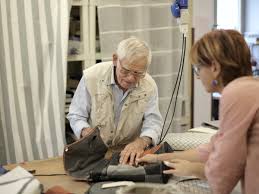How well do you sell yourself and market yourself? If you’re not good at selling or promoting, your Resume must do this. Answer the recruiting manager’s “Why should we hire you?” throughout your Resume. In other words, your Resume must match the employer’s needs, if you’re concerned about what should be on your resume. We’ll go over all you need to know about what to put on your resume for your first job, for skills, for objectives, with no experience, and for impressive things to add to it in this comprehensive tutorial.
You won’t have to stress about where to start writing after reading this since you will know exactly what to write.
What to Put on a Resume
Even if you’ve written resumes before, figuring out just what to include could still be difficult.
This is true as not all resumes contain the same sections. Your resume could take on a completely different appearance depending on your level of expertise and the position you’re looking for. The question of “what should I mention on my resume?” arises since each CV has a unique structure.
The following sections of your resume are necessary:
- Resume header
- Career summary or objectives
- Work History/experience
- Education
- Expertise/Skills
Further resume segments consist of:
- Experiences with Volunteering
- Awarded titles and credentials
- Interests and passions
- Publications
- Client reviews
- Associations for professionals
- Languages
- Resume references
While each of these serves a different purpose, they all aid employers in understanding your background and areas of experience.
#1. Resume Header
The header of the resume is where it begins. This should be the first thing a recruiter sees when they pick up your resume. This area of your resume must include your contact details.
A headshot, your first and last names, contact details (such as a phone number and email address), and a link to your LinkedIn page are included.
You may even go a step further and include a phrase that best encapsulates who you are and what you do. It also works if you highlight important information or facts by using colors, simple resume layouts, or icons.
#2. Career Summary or Objectives
The goal of your resume is stated in the objective statement. Not all resumes contain this. Use it to express to potential employers your work or career objective in simple terms. Make sure your purpose is pertinent to the position you are applying for. If you choose not to include an objective on your resume, be sure to include one in your cover letter.
Example To achieve a challenging position as an administrative assistant in the financial services industry,
#3. Work Experience
There are two ways you might format the list of your previous employment on your resume:
- Design of a chronological resume (lists work experience from oldest to latest)
- Format for a reverse chronological resume (lists work experience from latest to oldest)
The chronological order is typically out of date. We advise using the reverse chronological strategy to organize your resume if you have less than five years of expertise. When you have a great deal of work experience, the chronological resume format is recommended.
The reverse-chronological format is flexible, though.
It is more current and simpler for companies to understand how recently you have worked compared to the chronological approach.
This section must include the five items listed below:
- Job titles
- Dates of employment
- Company name
- Keywords
- Numbers/metrics
If your explanations included these gaps, it would be difficult for prospective employers to accept them.
#4. Education
Starting with the most recent or highest degree you have earned, list your educational achievements. Be sure to mention your degree, major, college name, and location, as well as your degree.
#5. Skills and Expertise
Skills and expertise include: soft abilities (being responsible, loyal, hardworking, energetic, outgoing.) and hard talents (research and writing, Microsoft word 98, Microsoft Publisher 2000, Public speaking. etc.)
#6. Hobbies and Interests
Include the company, the dates, and your job responsibilities. For instance, 2022–2023: Captain of the Juan Diego High School volleyball team
#7. Resume References(3-5 people)
You could use a manager in a college or university (current or past). A character reference (Your pastor, headmaster, youth group leader, or a close friend). First start with the person’s name, then your relationship with them, phone numbers for the organization, and contact.
What to Put on a Resume for First Job
A resume will help employers see your qualifications for the position when you’re applying for your first employment. You can demonstrate why you’re a solid candidate for the job by highlighting your relevant qualifications.
To write a Resume for your first job, follow these steps
#1. Research keywords
Check the job description’s keywords to match your resume. . If the applicant tracking system accepts your CV with job description keywords, employers may be more likely to evaluate it (ATS).
Because keywords vary by position and industry, you should carefully review any job descriptions that interest you and note any common terms. Keywords are usually under “job responsibilities” or “necessary credentials”. Highlight those keywords in your Resume.
#2. Choose a Resume Format
When applying for your first job, choose a resume format to highlight your experience and education. To assist employers in gauging your qualifications immediately, use a consistent resume format. Generally, one of the following formats can be used to organize your resume]
#3. Provide Your Contact Information
Include your contact information at the top of your resume so employers can find it. Bold your name. Include your name, city, state, phone number, email address, and location. Use your name or initials in a professional email address.
#4. Write a Professional Summary
Your professional summary displays your relevant education, experience, and talents for a job. . Summarize any applicable education, experience, or training. Showcase your accomplishments to impress potential employers. Professional summaries for the first resumes are shown below:
Lifeguarding-experienced honors student. a custom of watching younger cousins and siblings. CPR-trained.
#5. Describe Your Education
For your first employment, your education may matter more than other experience. Enter your institution’s and highest degree’s names. Please list your recent graduation date. Please tell us when you’ll graduate if you’re still enrolled.
Add education details to your original resume. Also, consider:
- Relevant academic training for the job
- Academic awards or achievements
- High GPA
#6. List Relevant Experience
Even if this is your first job application, your Resume can include relevant experience. Volunteering, internships, projects, and extracurriculars can be detailed in the experience section
Please provide your name and incident dates when submitting your experience. Name the company or activity. Use bullet points to summarize your duties, accomplishments, and qualifications for the job. Example of volunteer experience on a resume
- Provide food swiftly to everyone in line.
- Explaining the method helps people communicate their choices.
- Follow the group leader and organize the delivery line.
#7. Mention Your Skills
Give your abilities and experience a section in your CV. Include six to ten skills on your resume. mix hard and soft capabilities. Soft talents, like leadership, reveal your personality, whereas hard skills, like software, demonstrate your technical skills. Reread the job description to ensure you’ve included all the abilities the hiring manager wants. First-job skills may include:
- Programming languages
- Software
- Foreign languages
- Social media
- Customer service
- Communication
- Decision making
- Time management
- Teamwork
- Adaptability
- Organization
What to Put on a Resume for Skills
While a job description might help you choose hard skills, soft skills are harder to identify. To choose which soft skills to list on a resume, consider the job’s duties and which of your traits will help you succeed.
Certain skills are actually transferable to all vocations, even if each career requires a unique set of skills. Businesses from various industries are looking for applicants with the following qualifications:
Examples of hiring managers’ best Resume skills:
#1. Active Listening Skills
Active listening involves focusing on the speaker. Listening carefully helps you understand, integrate, and respond. Active listeners show interest in a conversation partner through verbal and nonverbal cues. Active listening may show coworkers that you are focused and involved.
#2. Communication Skills
Information exchange requires communication abilities. Being mindful and sharing your feelings are examples. Communication involves conversation, comprehension, and compassion. Great communication abilities are valued in all fields.
#3. Computer Skills
Understanding and using a variety of technologies are among the computer’s abilities. Physically operating a computer requires hardware skills, which could be as basic as knowing how to turn things on and off. You can use the software more effectively if you have strong software abilities. Businesses might view certain software abilities as requirements for employment, such as the ability to deal with spreadsheets or a certain coding language.
#4. Customer service skills
Your customer service skills—your characteristics and behaviors—can meet consumers’ needs and make them happy. Excellent customer service requires problem-solving and communication skills. Customer service is often called a “soft skill”.
#5. Interpersonal skills
Determine your ability to interact with others. They cover many cooperative situations. To lead teams, speak clearly, or solve problems, you must enhance your interpersonal abilities.
#6. Problem-solving skills
Problem-solvers can swiftly identify a problem’s fundamental cause and provide a solution that benefits everyone. Its competence is recognized in all markets and areas. To solve challenges effectively, you may need business or position-specific technical capabilities.
What to Put on a Resume for Objective
The most effective objectives are ones that are specific to the position you are applying for. It outlines the career you’re looking for as well as the skills and knowledge that make you the best candidate. A resume objective could also mention your professional background and long-term objectives.
#1. Be Specific
Certain applications boost your chances of receiving the job. Make a resume objective for each job.
Note: You should focus on specific skills and experiences that are relevant to the job when writing your outline
#2. Use Keywords
Include job description keywords in your resume objective. This might help a company’s applicant tracking system identify your outline and demonstrate how your talents match the job
#3. Make a Match
Include the professional ambitions the company can help you reach in your message. If you’re applying to a newspaper, don’t say you want to be a magazine managing editor. Evaluate your business direction.
Resume Objective Example
- I’m looking for a job at XYZ Corporation that will allow me to put my more than ten years of management, quality control, program development, and training experience to good use.
- My award-winning writing, research, and leadership abilities make me wish to work as a clinical practice assistant for a health maintenance organization.
- Looking for a position as an elementary school teacher at a small, independent school where I can apply my five years of classroom experience and expertise in curriculum creation.
What to Put on a Resume with No Experience
For various reasons, you may not have work experience to list on your résumé. You may include more information on your resume to persuade employers that you are the best candidate.
When applying for a job without experience, highlight your past accomplishments, skills, and experiences. Managers evaluate entry-level candidates’ résumés for attitude and aptitude. That is:
- Attitude traits include positivity, hard work, and likeability.
- Ability to pick up new talents quickly while working
Keep these two traits in mind while you write your resume and make sure to mention any relevant experiences that show you have the attitude and aptitude for the job.
#1. Professional Summary
Modern resumes should replace career objectives with professional summaries. After your name and contact information, including a two- or three-word professional profile describing your history, hobbies, and talents.
If you have no job experience, your professional profile should include one or two adjectives that define your work ethic, education, practical skills, and professional interests or hobbies. Your resume should match the job.
#2. Essential Skills You’ve Learned
After your professional overview, provide relevant talents for the job. To determine job credentials, read job descriptions for that title. Qualifications or certificates usually mention many skills you can replicate.
List your unemployed skills without fear. Include your class and extracurricular skills. In interviews, be honest about your skills.
Examples
- Time Management
- Professionalism
- Public Speaking
- MS Office
- Organizing and Filing
#3. Education and Academic Achievements
After describing your skills, put your education on your resume. List your degrees. You can add credits or hours even if you quit school before graduating.
Add your degree, field of study, school, city, and dates of enrollment. Other academic honors include the Cum Laude diploma.
#4. Classes, Training, and Certifications
Include relevant training, credentials, and coursework on your resume.
Add relevant coursework. Substitute ECON101 for the class number. Provide a one- or two-sentence summary if the course is relevant to the job.
For each training session and certification on your resume, indicate the location, kind, date, and expiration date (if any).
You can also highlight class projects or summer neighborhood bake sales that are relevant to the role. Explain how your employment affects your business fit. When creating the proposal, consider how you would explain its importance in an interview.
What Are Good Things to Put On Your Profile for a Resume?
- Expertise and skill that is relevant.
- Successes and noteworthy accomplishments.
- Many years of expertise.
- Occupational strengths (both soft and hard skills)
- Qualities that set the position apart
- Individual characteristics that improve your work.
The 7 Necessary Parts of a Resume
- Personal Information.
- Objective.
- Education.
- Work and Related Experience.
- Awards and Honors.
- Activities/Hobbies.
- Skills.
- References (3-5 people
What Do I Put on a Resume with No Experience?
- Describe your academic highlights. Despite the fact that you might lack relevant work experience, you might instead want to concentrate on your degrees and training.
- Explain your interests and passions.
- Highlight your technological expertise.
- Mention your soft skills.
- Customize your resume
How Do You Write a Resume for the First Time?
- Select a suitable resume template.
- Make a note of your contact details (correctly)
- Add an objective in your resume.
- Describe your education (in detail)
- Showcase your abilities.
- Include any optional sections.
- Follow the one-page rule.
How Do I Write a Resume for a Job?
- Choose the Correct Resume Format.
- Provide your contact details and personal information.
- Initially, use a heading statement (Resume Summary or Resume Objective)
- Include your key accomplishments and relevant work experience.
- Properly cite your education.
- Provide Relevant Skills That Match the Job Ad.
What Is the Difference Between a CV and a Resume?
Because it includes a full history of your academic accomplishments, the CV varies in length. However because a resume gives a quick review of your abilities and experience for a particular employment, its length is frequently shorter and determined by years of experience (generally 1-2 pages).
What Are the 5 Golden Rules of Resume Writing?
- Rule 1:Be Careful What You Type.
- Rule 2:Your professional profile should be written last.
- Rule 3:List Your Duties in Brief.
- Rule 4:Make accomplishments your primary area of concentration.
- Rule 5:Publish For Your Reader.
What Do Employers Look For in Resume
- Keyword Research
- Error-Free Writing
- Brief Summary
- Customization
- Easy-to-Read Formatting
- Accomplishments
Related Posts
- WHAT IS A RESUME FOR A JOB: What It Should Look Like & How to Write It
- HOW TO MAKE A GOOD RESUME: Tips on Writing an Effective Resume
- 53+ Hard Skills And How To Highlight Them On A Resume
- RESUME WRITING: What It Should Look Like and Easy Guide to Make One
- BEGINNER SKILLS FOR RESUME: 15 Top Skills, Tips & All You Need !!!






